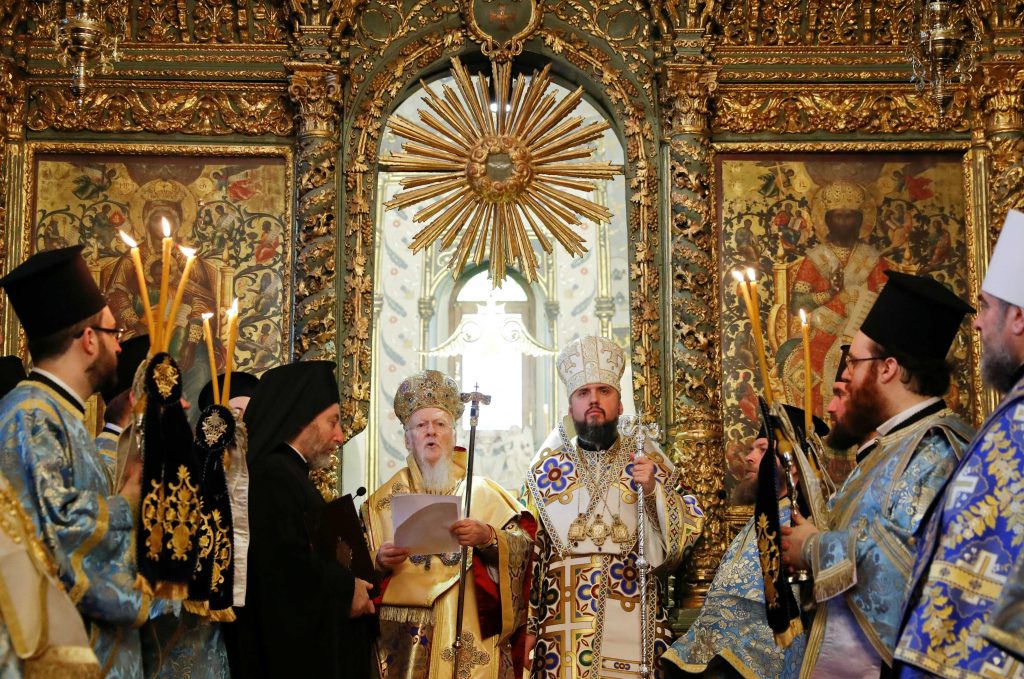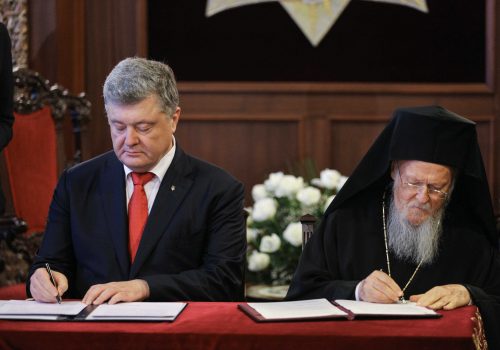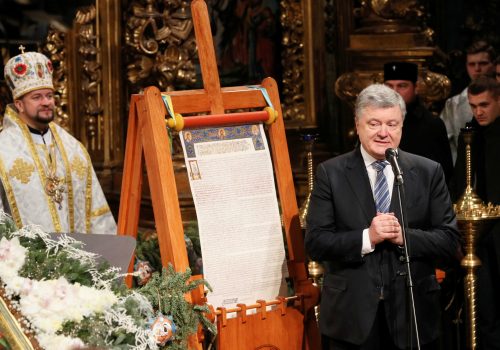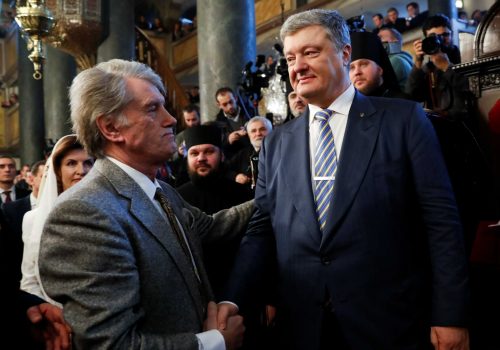It’s Christmas Eve in Kyiv, and Ukraine just won a major victory in its long struggle for independence from Moscow.
On January 5, Ecumenical Patriarch Bartholomew affirmed the independence of the new Ukrainian Orthodox Church in Istanbul. Ukraine now joins fourteen other autocephalous churches making up the Orthodox Christian world. This formally severs the tie between Orthodoxy in Ukraine and the Moscow Patriarchate, which from the late seventeenth century had canonical authority over Ukraine’s Orthodox believers. The tomos, or decree of independence, follows the church conference in Kyiv last month that created a single Ukrainian Orthodox church out of the Orthodox Church of Ukraine (Kyiv Patriarchate) and the Autocephalous Ukrainian Church. Two Bishops and some priests from the Ukrainian Orthodox Church (Moscow Patriarchate) also participated in the conference and joined the new Ukrainian church.
Stay updated
As the world watches the Russian invasion of Ukraine unfold, UkraineAlert delivers the best Atlantic Council expert insight and analysis on Ukraine twice a week directly to your inbox.
This is a huge blow to Moscow’s Patriarch Kirill and his close ally, Russian President Vladimir Putin, whose policies Kirill faithfully supports. It is also a large step in Ukraine’s efforts to free itself of Kremlin influence. The Moscow Patriarchate has been a very effective instrument of Kremlin soft power. Before the tomos, the Moscow Patriarchate could claim that the Orthodox churches in Ukraine not under its control had no canonical status in the Orthodox world. This is no longer true. The Moscow Patriarchate had been losing believers in Ukraine since at least the Orange Revolution in 2004 when it backed Moscow’s opposition to the changes, and this trend only accelerated after the Kremlin seized Crimea and launched a hybrid war in the Donbas.
But the fight isn’t over. The Kremlin and the Moscow Patriarchate will fight hard to retain its church position in Ukraine. That was evident at the unification sobor in December where only two Moscow Patriarchate bishops participated, while as many as twenty-five had indicated their readiness to participate. It was also evident in the decision of the Moscow Patriarchate to sever relations with the Ecumenical Patriarchate over the decision to grant autocephaly to the Ukrainian Church. But this is a war that the Moscow Patriarchate and its Kremlin backers cannot win.
Eurasia Center events

While the Ukrainian Orthodox Church joins the fourteen other autocephalous churches, its relationship with the Ecumenical Patriarchate will need refinement. The tomos states that the Ecumenical Patriarchate must approve any changes from the language of the tomos. At least one part of the tomos is something that the Ukrainian Church will want to change, since it states that the Ukrainian church only has jurisdiction in Ukraine. This means that Ukrainian Orthodox parishes outside of Ukraine will be under the Ecumenical Patriarchate This is a nice gift to Constantinople and a reminder to all of the meaning of the adjective “byzantine.” The insistence that parishes outside of Ukraine must fall under the Ecumenical Patriarch will not be welcome by Ukrainian believers, and many such parishes may not go along. These complications are a reminder that the tomos is one more step—critical to be sure, but just one step—in the emergence of a united and independent Ukrainian church.
Even with these limitations, the tomos is a very good thing for Ukraine and a victory for Ukrainian President Petro Poroshenko, who has worked hard, along with Patriarch Filaret of the now-defunct Kyiv Patriarchate.
John E. Herbst is the director of the Eurasia Center at the Atlantic Council. He served as the US ambassador to Ukraine from 2003-2006.
Further reading
The views expressed in UkraineAlert are solely those of the authors and do not necessarily reflect the views of the Atlantic Council, its staff, or its supporters.

The Eurasia Center’s mission is to enhance transatlantic cooperation in promoting stability, democratic values and prosperity in Eurasia, from Eastern Europe and Turkey in the West to the Caucasus, Russia and Central Asia in the East.
Follow us on social media
and support our work
Image: Ecumenical Patriarch Bartholomew I and Metropolitan Epifaniy, head of the Orthodox Church of Ukraine, are seen after the Epiphany mass at the Patriarchal Cathedral of St. George in Istanbul, Turkey January 6, 2019. REUTERS/Murad Sezer




